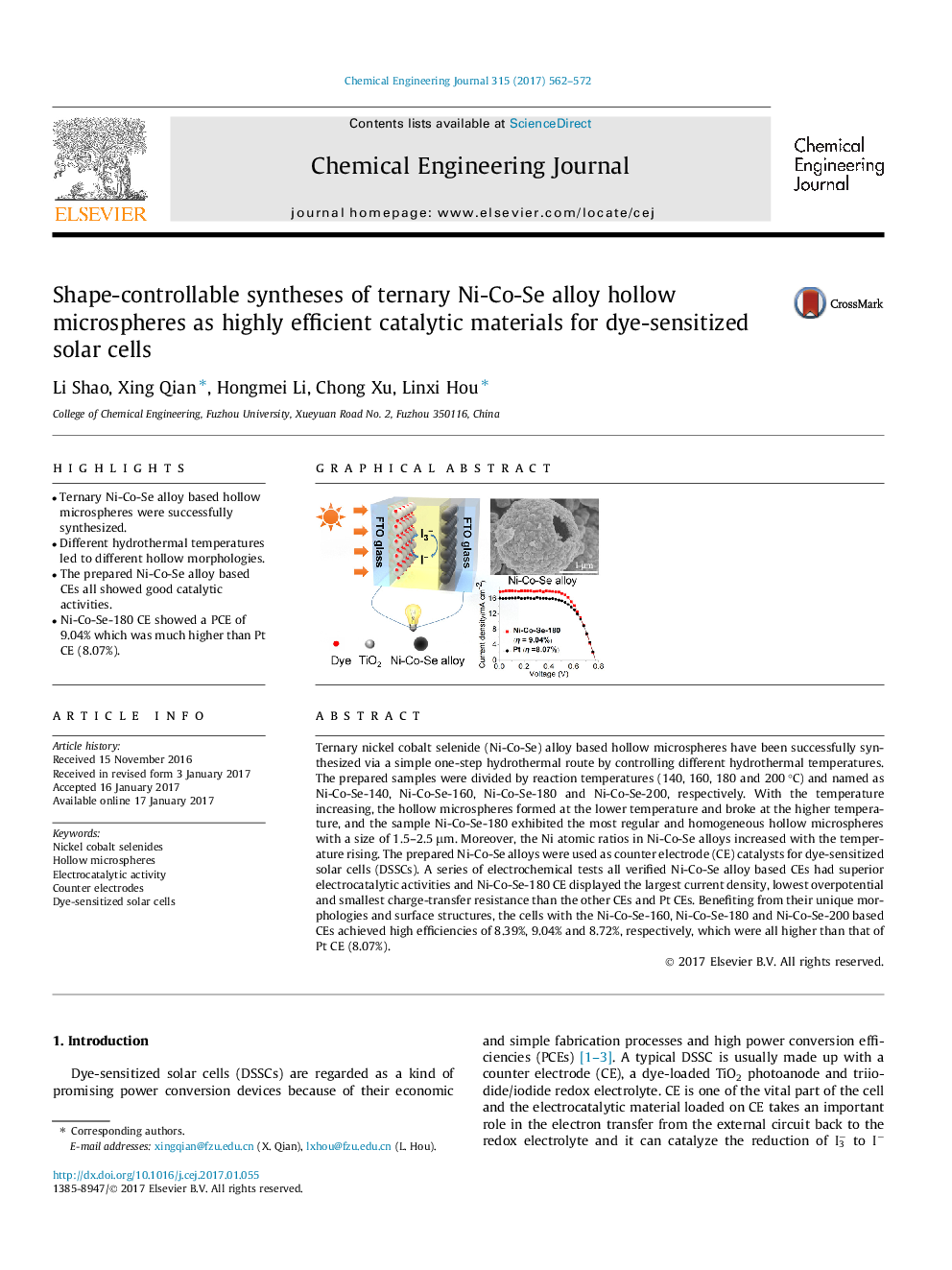| Article ID | Journal | Published Year | Pages | File Type |
|---|---|---|---|---|
| 6466419 | Chemical Engineering Journal | 2017 | 11 Pages |
â¢Ternary Ni-Co-Se alloy based hollow microspheres were successfully synthesized.â¢Different hydrothermal temperatures led to different hollow morphologies.â¢The prepared Ni-Co-Se alloy based CEs all showed good catalytic activities.â¢Ni-Co-Se-180 CE showed a PCE of 9.04% which was much higher than Pt CE (8.07%).
Ternary nickel cobalt selenide (Ni-Co-Se) alloy based hollow microspheres have been successfully synthesized via a simple one-step hydrothermal route by controlling different hydrothermal temperatures. The prepared samples were divided by reaction temperatures (140, 160, 180 and 200 °C) and named as Ni-Co-Se-140, Ni-Co-Se-160, Ni-Co-Se-180 and Ni-Co-Se-200, respectively. With the temperature increasing, the hollow microspheres formed at the lower temperature and broke at the higher temperature, and the sample Ni-Co-Se-180 exhibited the most regular and homogeneous hollow microspheres with a size of 1.5-2.5 μm. Moreover, the Ni atomic ratios in Ni-Co-Se alloys increased with the temperature rising. The prepared Ni-Co-Se alloys were used as counter electrode (CE) catalysts for dye-sensitized solar cells (DSSCs). A series of electrochemical tests all verified Ni-Co-Se alloy based CEs had superior electrocatalytic activities and Ni-Co-Se-180 CE displayed the largest current density, lowest overpotential and smallest charge-transfer resistance than the other CEs and Pt CEs. Benefiting from their unique morphologies and surface structures, the cells with the Ni-Co-Se-160, Ni-Co-Se-180 and Ni-Co-Se-200 based CEs achieved high efficiencies of 8.39%, 9.04% and 8.72%, respectively, which were all higher than that of Pt CE (8.07%).
Graphical abstractDownload high-res image (88KB)Download full-size image
